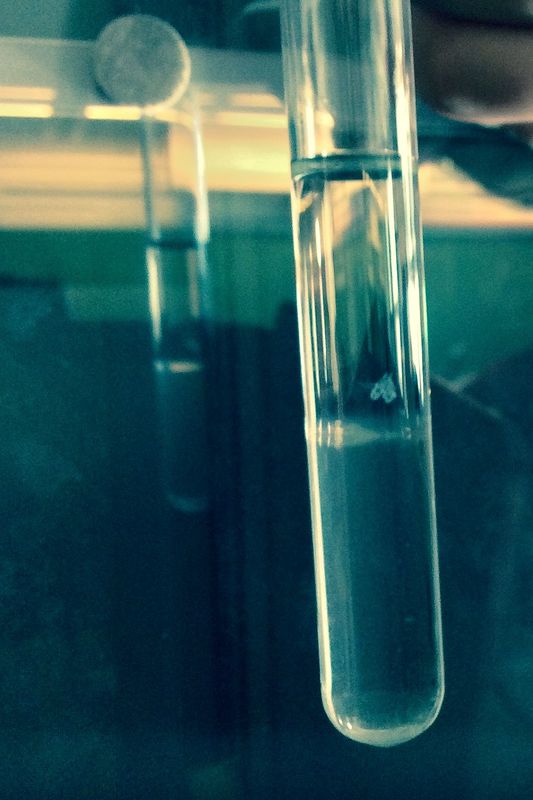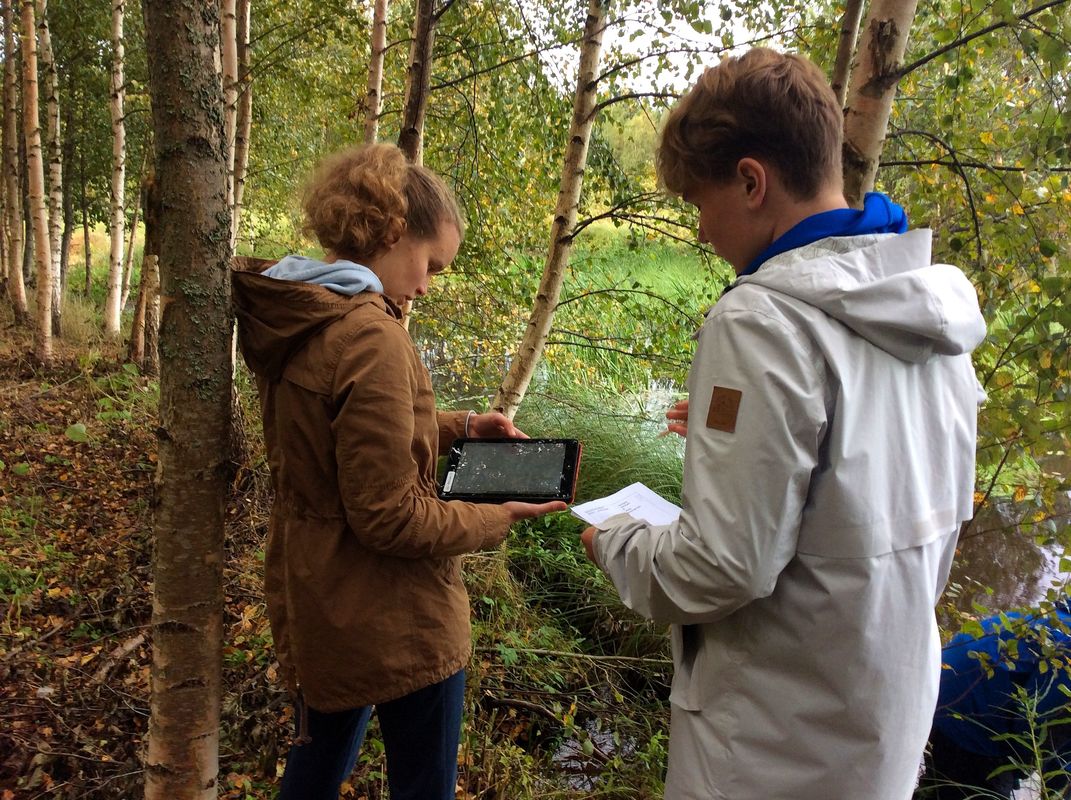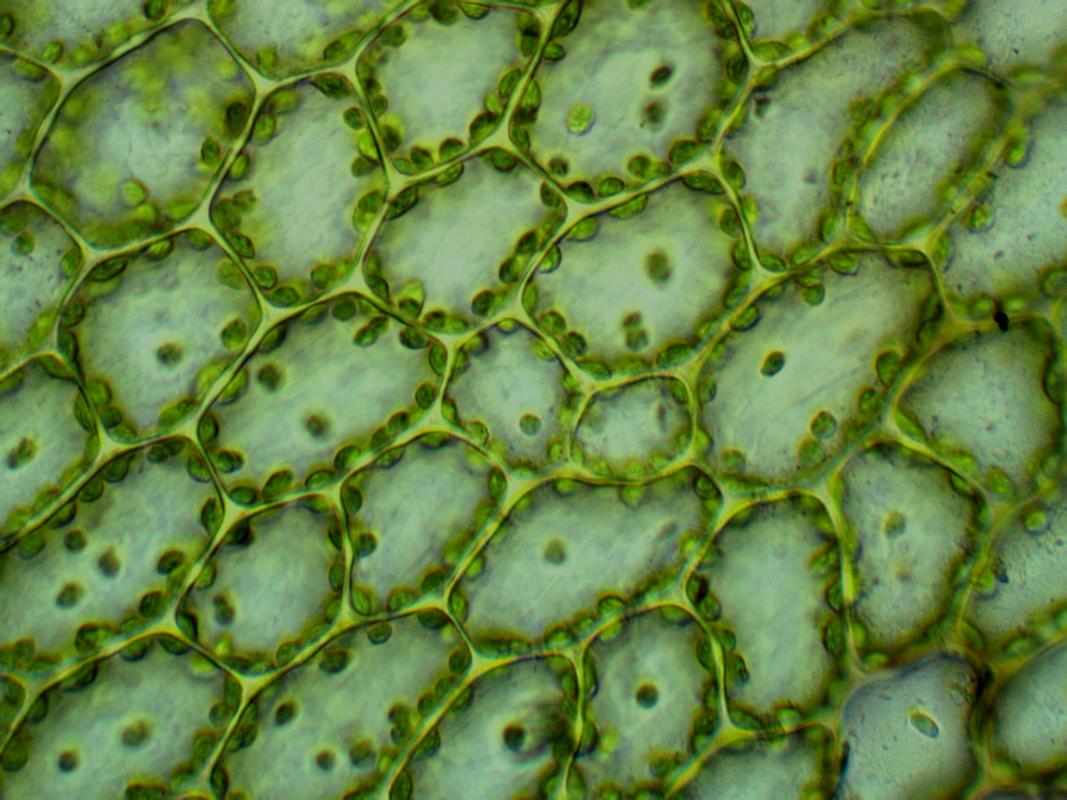3. The study of nature
Contents
3.1 Biologists study life
Biology
is the science of life. It studies all living things, from the molecules of life to its global and universal phenomena. The job of biologists is to increase and elaborate on existing knowledge. The science of biology is divided into different fields in accordance to the studied phenomena. Such fields include

- Molecular biology: life on the molecular level
- Cell biology: cells and cell tissues
- microbiology: bacteria and other microscopic organisms
- anatomy: the structures of animals
- physiology: the mechanisms of organisms
- ecology: the relationship between organisms and the environment
- ethology: the behavior of animals
- genetics: the inheritance of characteristics and the functions of genes
- biotechnology: making use of organisms and the substances they produce
- environmental ecology: the relationship of humans and the natural environment
Biological knowledge is used in a variety of different fields. For example, food production, forestry, and medicine all rely on biological knowledge. Luckily for us, most diseases, their causes, and their treatments are often revealed to us when we visit the doctor.
In the 19th century, for example bacteria were totally unknown to humanity. The amount of malnourished people has been reduced from one billion to approximately 750 million during the last couple of decades, despite the drastic increase in the world’s population. This would not be possible without biological knowledge and its applications.
However, most biological knowledge does not produce immediate economic gain. Nevertheless, it is still important, interesting, and useful to know what constitutes our world and how it has developed.

By combining our knowlege of the requirements of different climates, soils and plants, the right crop species and cultivation methods can be selected. This will increase the efficiency and yield of agricultural production.
3.2 Observations and experiments
 The living world around us is full of different things to things about.
The living world around us is full of different things to things about.
- What kinds of species are found on the shores of water?
- How can perch survive through the dark and cold winter in ice-covered water?
- Why are trees so tall?
Different questions require different research methods. If one wants to discover what species of plants, animals, and fungi a certain area contains, or to find out what a perch eats, one must conduct observational research.
Natural surveys are a way of discovering what species inhabit a certain area.
The diet of perch can be investigated by studying the contents of their intestines or by making observations about the fish themselves.
The validity of a hypothesis is studied with experimental research. For example, if one wants to find out how the changes in the amount of nutrients affects a set of plankton species, one must devise an experimental setup. For example, one can raise plankton organisms in aquariums with different nutrient concentrations.
Scientific experiments compare test groups where certain studied variables are modified with control groups where these variables are left unchanged. Other factors, such as temperature and the amount of light, must be kept as similar as possible between the different groups. Precise observations on the test and control groups are made during the experiment. When the experiment is finished, the results of the two groups are compared.
The acquirement of biological knowledge requires a variety of tools. For example, the study of large vegetation regions requires satellite images from these areas, whereas the study of cells requires different microscopes. Tools are also needed to gather the studied organisms or substances. For example, light traps and nets are used to catch insects that are used as subjects of biological studies.
3.3 Science produces information
The goal of science is to increase our knowledge about the reality around us. This raises the question of what knowledge is and what differentiates it from beliefs and guesswork. The rise of the internet and its enormous amount of information has made it even harder to distinguish real scientific knowledge from other, less reliable information. Therefore, every one of us should practice recognizing real scientific knowledge.
Although a lot of what constitutes scientific knowledge changes and is replaced by newer and more accurate scientific information, the results gained from scientific research provide the most reliable information accessible to us at this moment. The criteria for research are the same for all the fields of the natural sciences.
Valid scientific knowledge is comprised of the following things:
- It has been made based on reliable observation.
- It follows logic. Not everything needs to be or even can be studied directly. Instead, we can trust logical conclusions. For example, 2 x 1 000 = 2 000, even if you do not count it with your fingers.
- It is objective, or the same for all observers. The feelings and wishes of the researcher cannot influence the results of their research.
- The results of the research have been reached with sufficient, randomized data. Single occurrences or individual organisms do not provide adequate sources of information.
The research must be repeatable. The methods and stages of the study must be precisely explained. If the experiment is valid, others can repeat the experiment and get similar results.

Gaining valid scientific knowledge requires diligent research.
3.4 Different microscopes for different needs
 Like their name suggests, microscopes make objects that are too small for the naked eye to distinguish visible. Nowadays, there are several different types of microscopes. For example, atomic power microscopes can be used to observe even individual molecules.
Like their name suggests, microscopes make objects that are too small for the naked eye to distinguish visible. Nowadays, there are several different types of microscopes. For example, atomic power microscopes can be used to observe even individual molecules.
The choice of microscope depends on what one wants to observe. The largest magnification is often not the desired goal. Instead, microscopes are used to achieve the clear view of the studied subject.
If the studied subject is thick and impenetrable by light, it is studied with a preparation microscope. Preparation microscopes illuminate the subject from above and show the subject as if through a very powerful magnifying lens.
The picture on the right shows the developing sporangia of a fern that has been achieved with a preparation microscope.

A fluorescent microscope is used, if one wants to study cells or cell tissues. The studied samples must be very thin so that the light from the microscope can penetrate it and reveal its structure.
The second picture on the right shows plant cells viewed through a fluorescent microscope.
Digital cameras can be attached to some modern microscopes, making microscopic photography easy and simple. A modern phone camera can be also used to take images through a microscope, if one’s hands are stable enough.
3.5 Using a compound microscope
 When using a microscope, one must be careful not to damage the device or the studied sample. Proceed slowly and carefully.
When using a microscope, one must be careful not to damage the device or the studied sample. Proceed slowly and carefully.
The work desk must be adequately firm, as every vibration and movement of the desk are accentuated when studying small objects through a microscope. The microscope is carried by holding its body and supporting its base.
- See that the shortest lens (smallest magnification) points downwards. Turn the lens dial, if necessary.
- Place the sample on a preparation dish and cover it with a cover glass. Place the dish on the microscope’s base.
- Turn on the microscope’s lamp.
- Observe, if you can see the sample through the eyepiece. Move the preparation dish, if necessary.
- Use the coarse focus knob to focus the lens.
- If necessary, use the fine focus knob to focus the lens even more precisely.
- When the view is precise enough, you can use the lens dial to select another magnification level. Focus the lens only with the fine focus knob from this point on!
- To study very small structures, you can select the longest lens. Notice, that this lens will stay very close to the sample or even touch the cover glass. Because of this, one must be very careful when focusing the longest lens.

Illustration of steps of prepare microscope slide.
